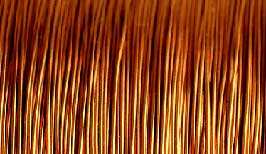Across all industries, “green” is a major trend, and typically for good reason. Green products tend to be safer for both people and the planet, as well as containing varying degrees of reusability that lead to cost savings.
When it comes to metals and metal products, the same holds true. Green alloys are quickly becoming the alloy of choice for several industrial professionals—no matter the specific metal—due to the numerous benefits offered.
Green Alloys 101So what are green alloys? And why are they beneficial?
Whether nickel aluminum bronze, manganese bronze, or anything in between, green alloys are environmentally-friendly metal alloys that have an extremely low lead content, or no lead at all in some instances. In general, they do not contain elements known to be harmful to the environment or to people and animals, and are often made from recycled content.
Many green alloys meet the specifications set forth by the Reduction of Lead in Drinking Water Act, as well as other industry standards.
Types of green alloys include, but are not limited to, aluminum bronze, high tin bronze, bismuth tin bronze, nickel aluminum bronze, and more.
Green Alloy Benefits
First and foremost, green alloys are better for people and the planet. No matter the application, they provide a safety factor that many standard alloys do not.
Furthermore, quality green alloys offer the same qualities traditional alloys are known for, including excellent wear, strength, machinability, hardness, tightness, and more. Nothing is lost by making them greener and safer.
Finally, another benefit comes in the form of legislative/regulatory compliance. They meet the standards required by many industries and/or locations, and are well suited for applications in which safety is a critical factor.
In the end, green alloys are the clear choice for those needing a blend of safety and high quality—in several industries, their use is a win-win proposition.


